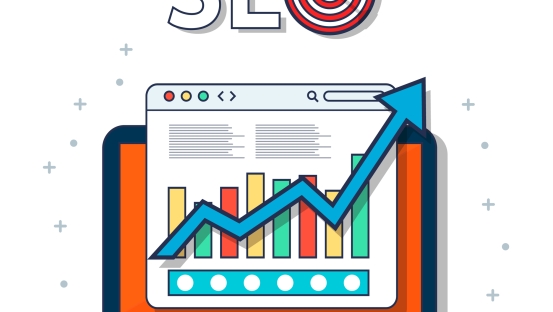How to Use Webinars as a Sales Funnel for Live Speaking Gigs

Webinars are not just a tool for sharing knowledge—they’re a powerful sales funnel that can help public speakers secure live speaking engagements. By showcasing your expertise, connecting with your audience, and positioning yourself as the go-to authority in your field, webinars can lead to lucrative opportunities on physical and virtual stages.
Here’s a guide to effectively using webinars to drive live speaking gigs.
1. Define Your Target Audience
Before hosting a webinar, identify the audience you want to attract. Are you targeting corporate event organizers, conference planners, or industry professionals? Understanding your audience will help you craft a presentation that resonates with their needs and positions you as the speaker they’re looking for.
Tips for Targeting:
-
Research the types of events your audience organizes or attends.
-
Tailor your webinar’s topic to address a specific challenge or trend in their industry.
-
Use keywords in your webinar title that appeal to your audience, such as “Leadership Strategies for Corporate Teams” or “How to Engage Audiences at Industry Conferences.”
2. Choose a Compelling Webinar Topic
Your webinar should demonstrate your expertise while leaving the audience wanting more. The topic should showcase your skills and provide a glimpse of what you can deliver as a live speaker.
Examples of Engaging Topics:
-
“The Power of Storytelling: Captivate Any Audience”
-
“Leadership in Action: Motivating Teams Through Change”
-
“How to Use Data to Deliver Impactful Presentations”
Make sure your topic aligns with your niche and highlights your unique value as a speaker.
3. Create High-Quality Content
The content of your webinar should be educational, engaging, and actionable. Event organizers and decision-makers are more likely to hire you if they see your ability to deliver valuable content.
Content Tips:
-
Start with a strong introduction that establishes your authority and builds trust.
-
Use visuals like slides, charts, and videos to make your presentation dynamic.
-
Include real-life examples, case studies, or personal stories to connect with your audience.
4. Showcase Your Speaking Skills
Treat your webinar as a mini-stage. This is your chance to demonstrate your speaking style, energy, and ability to engage an audience.
How to Impress:
-
Speak with confidence and enthusiasm.
-
Use storytelling techniques to keep your audience hooked.
-
Engage participants through polls, Q&A sessions, and interactive elements.
5. Incorporate a Subtle Sales Pitch
While the primary goal of your webinar is to provide value, it’s also an opportunity to pitch your speaking services. Avoid being overly salesy—focus on how your expertise can solve problems for your audience.
Soft Pitch Ideas:
-
Share examples of events where you’ve spoken and the impact you’ve made.
-
Mention that you’re available for conferences, corporate events, and workshops.
-
Include a call to action like: “If you’d like to bring this message to your organization, let’s connect!”
6. Promote Your Webinar Effectively
A successful webinar starts with strong promotion. Use multiple channels to reach your target audience and build anticipation.
Promotion Strategies:
-
Email Marketing: Send invitations to your email list with a clear value proposition.
-
Social Media: Create posts and ads that highlight the benefits of attending your webinar.
-
Professional Networks: Share the webinar details on platforms like LinkedIn and SpeakerHUB, where event organizers are active.
7. Record and Repurpose Your Webinar
A recorded webinar is a valuable asset that can continue to work for you long after the live session ends.
Ways to Repurpose:
-
Share the recording on your website or YouTube channel.
-
Send the recording to event organizers as part of your pitch.
-
Extract clips to use as promotional videos on social media.
8. Use Webinars to Generate Leads
Webinars are an excellent tool for capturing contact information from potential clients. Use sign-up forms to gather details like email addresses, job titles, and company names.
Lead Capture Tips:
-
Offer a free downloadable resource, like a checklist or eBook, as a bonus for signing up.
-
Add a question on the registration form to identify attendees who organize events.
-
Follow up with attendees after the webinar with a personalized email thanking them for attending and sharing your availability for speaking engagements.
9. Analyze and Optimize Your Webinar Funnel
After your webinar, review its performance to identify areas for improvement.
Metrics to Track:
-
Registration and attendance rates.
-
Engagement levels during the session (e.g., poll participation, Q&A activity).
-
Conversion rates: How many attendees expressed interest in hiring you?
Use this data to refine your approach for future webinars.
10. Highlight Your Speaker Profile
As part of your follow-up, direct attendees and leads to your professional speaker profile. Platforms like SpeakerHUB are ideal for showcasing your expertise, credentials, and past speaking engagements. SpeakerHUB’s strong SEO authority ensures your profile ranks highly in search results, making it easier for event organizers to find and hire you.
Why SpeakerHUB?
-
Build credibility with a professional profile.
-
Connect directly with event organizers looking for speakers in your niche.
-
Increase your visibility and discoverability online.
Final Thoughts
Webinars are a powerful sales funnel for live speaking gigs, allowing you to demonstrate your value, build trust, and generate leads. By strategically planning your webinar, showcasing your expertise, and following up with potential clients, you can turn virtual presentations into real-world opportunities.
Ready to expand your speaking career? Create a profile on SpeakerHUB today and connect with event organizers looking for talented speakers like you!



